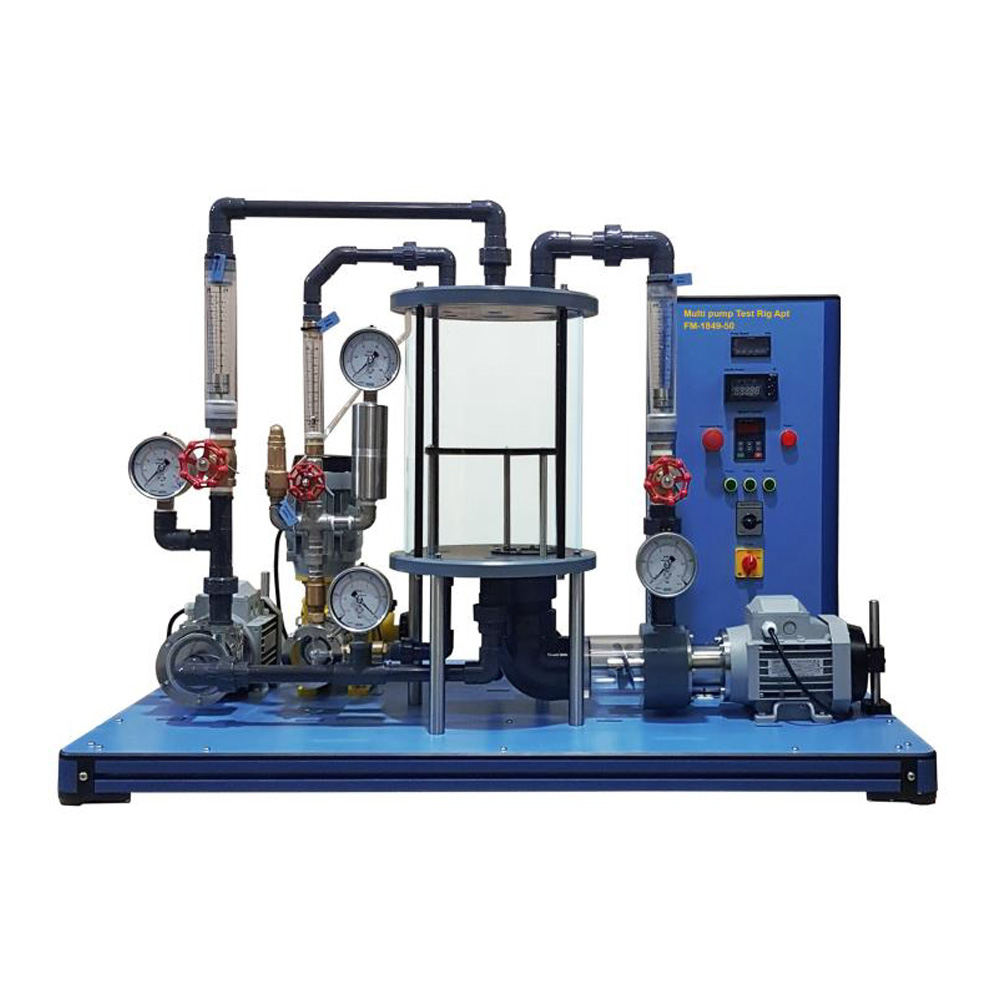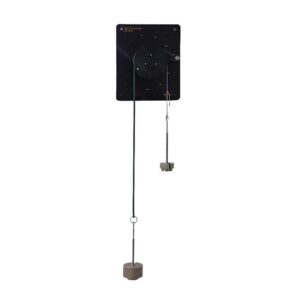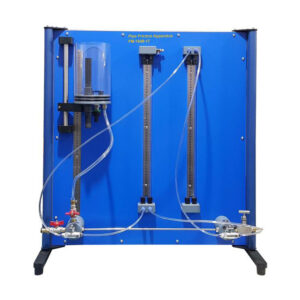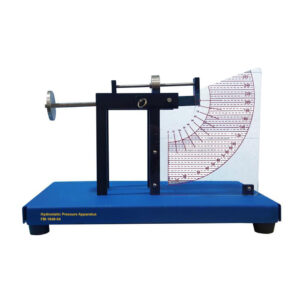Pumps are turbo machines that are used for conveying fluids. The Multipump Test rig can be used to study functions and performance of different types of pumps normally used in our daily routines.
Here in this apparatus we have three types of pumps.
- Centrifugal Pump
- Plunger (Reciprocating Pump)
- Axial Flow Pump
In this apparatus student can operate and record a typical pump characteristic curve. The experimental unit includes a self-priming pumps, many valve to the management of which pump operation user want to perform along with sensors to measure the pressure, flow, electric power, speed and other associated component to display different parameters associated with pumps performance.. The speed is infinitely adjustable by using a variable frequency converter. Valve are used to adjust the head. In experiments, the operating behaviour of the pump as a function of the flow rate is studied and displayed in characteristic curves. The motor’s speed and electrical power are displayed digitally. Pressures on the inlet and outlet side are displayed on manometers.
The rig is mounted on a single skid where no connections are needed to made by the user. Only select the valves and electrical switches to operate the desire pump. The pump draws in water from the in built service tank on the base unit. The flow rate is determined using rotameter and circulates in close cycle operational tank. The detailed manual material sets out the fundamentals and provides a step-by-step guide through the experiments. The transparent nature of the pumps allows the students to visualize the internal constriction and part functional behaviour during operation.




